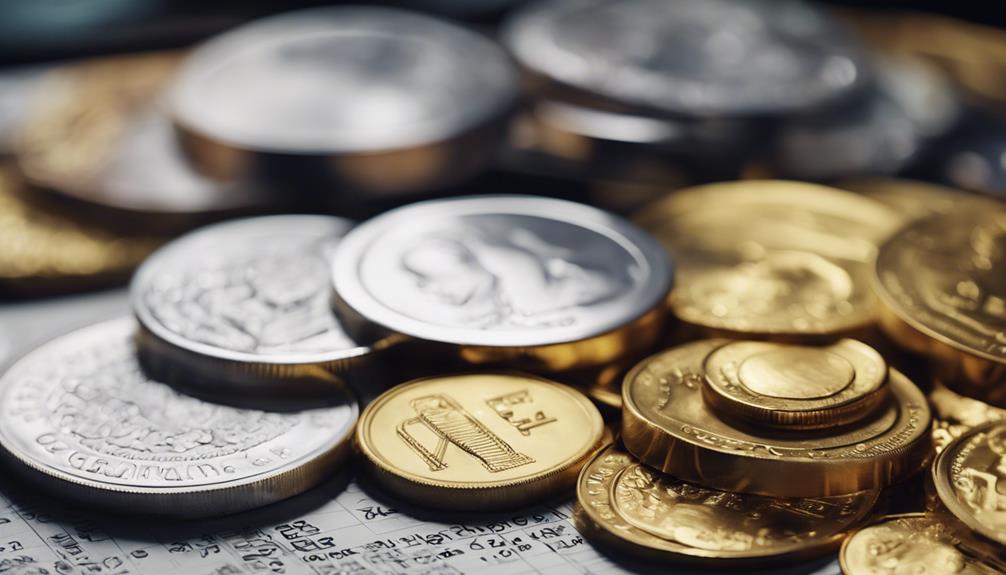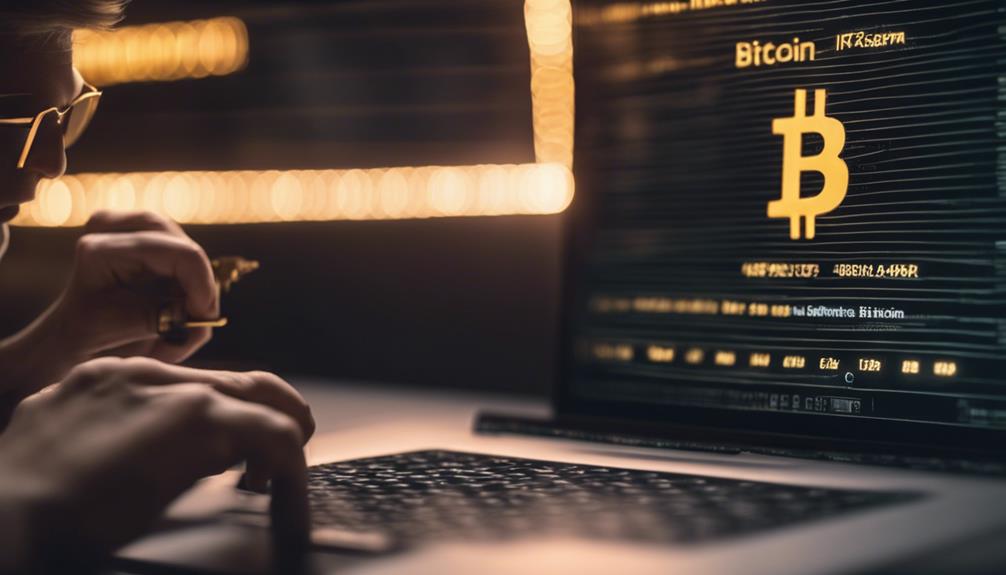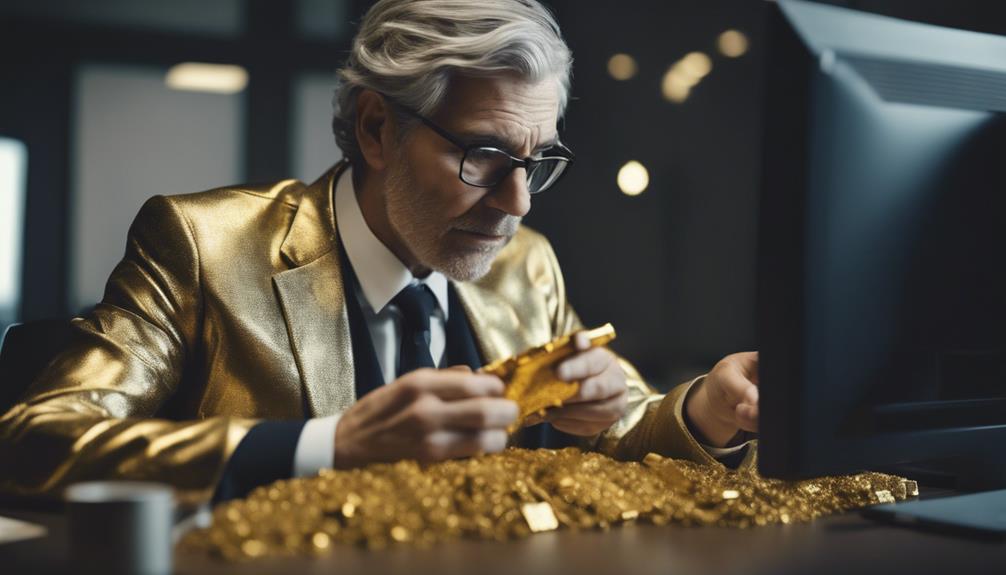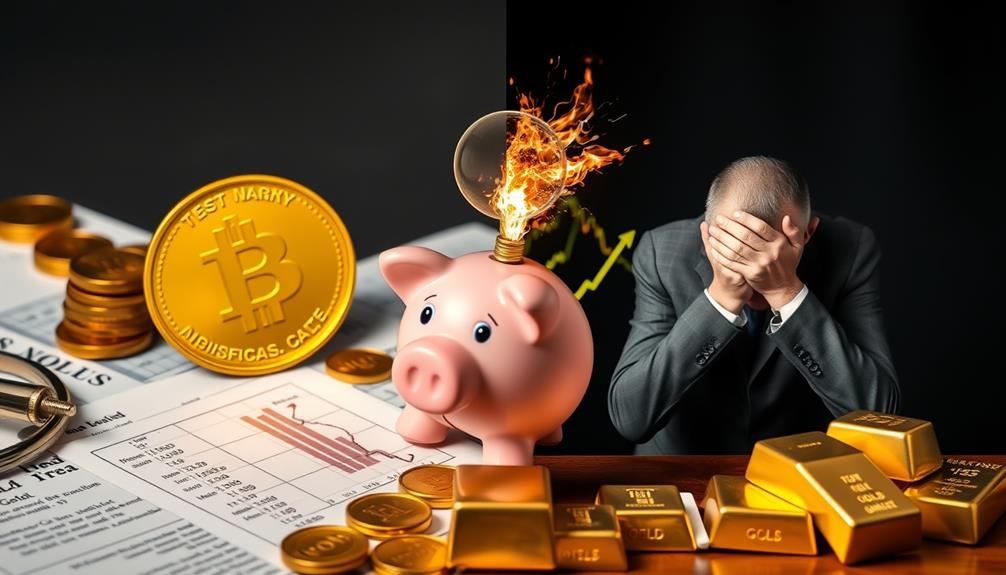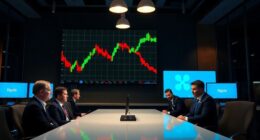Investing in precious metals has its advantages, such as hedging against inflation, increasing in value, and providing diversification. By owning tangible assets, you can achieve stability and control. However, there are challenges to consider – lack of income, storage costs, price volatility, and higher taxes. Precious metals offer a sense of security, portfolio diversification, and a shield during economic uncertainty. Risks include fluctuations in prices, issues specific to companies, and underperformance during market sell-offs. The liquidity of precious metals depends on demand, economic conditions, supply, geopolitical events, and global trends. It is essential to strike a balance among these factors for a well-rounded investment strategy.
Key Takeaways
- Hedge against inflation and economic uncertainty.
- Limited supply and global demand drive value.
- Diversification benefits for investment portfolios.
- Tangible assets offer stability and control.
- Price volatility and storage costs are drawbacks.
Advantages of Investing in Precious Metals
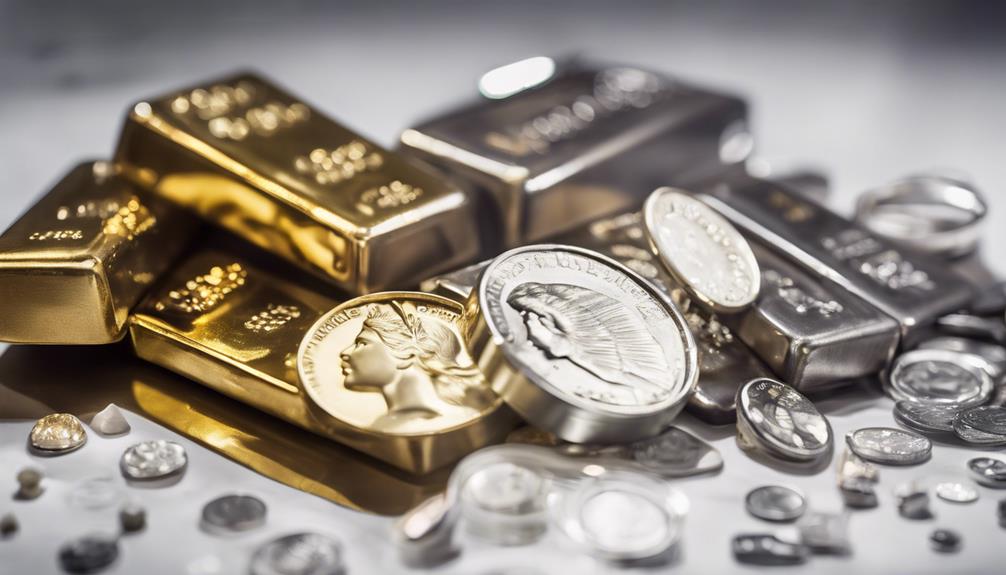
Investing in precious metals offers numerous advantages for individuals seeking to diversify their portfolios and safeguard against economic uncertainties. Gold and silver, as precious metals, serve as a hedge against inflation, preserving your purchasing power over time. Their limited supply and global demand contribute to long-term value appreciation, making them attractive assets for investment. Including precious metals in your portfolio aids in diversification, stabilizing investments and reducing reliance on traditional assets.
Moreover, owning tangible assets like gold and silver provides a sense of control, security, and stability within your portfolio. The liquidity of precious metals allows for easy buying and selling, offering flexibility and quick conversion into cash when needed. These characteristics make precious metals a valuable addition to your investment strategy, ensuring stability and potential growth in the long run.
Disadvantages of Investing in Precious Metals
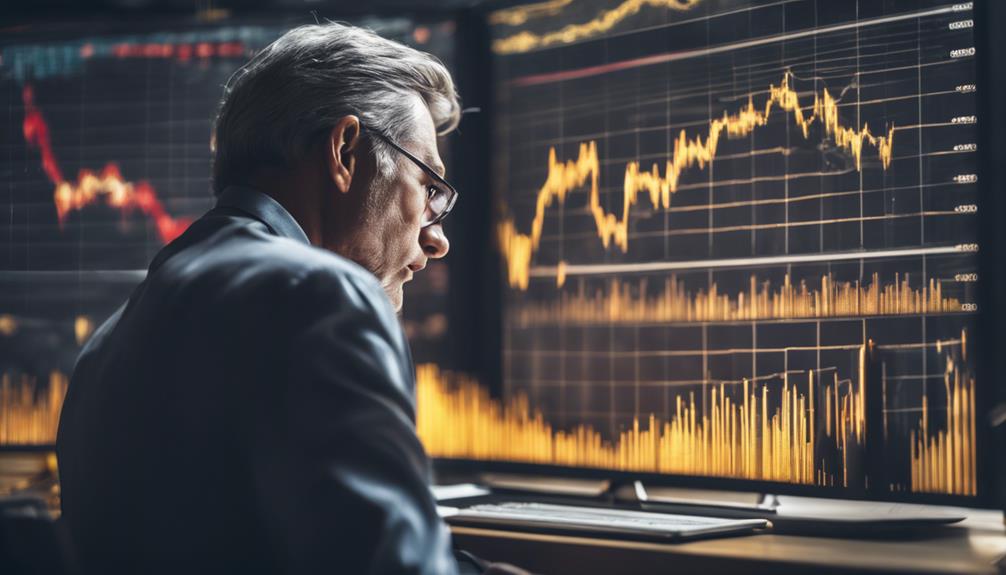
If you're thinking about investing in precious metals, be mindful that these assets come with their own set of drawbacks that you should carefully assess. Precious metals, such as gold and silver, don't generate income like dividends or interest, limiting their potential for passive earnings. Additionally, holding physical precious metals requires dealing with storage and security costs, which add to the overall expenses of the investment.
Price volatility is another aspect to take into account when investing in precious metals. The value of these metals can experience significant fluctuations, posing risks for investors, especially those with lower risk tolerance levels. Moreover, investing in precious metals may lead to higher tax rates on profits when compared to other investment options, affecting your overall returns.
Moreover, precious metals, particularly physical holdings, may lack liquidity. This means that converting them into currency for transactions could be challenging when compared to more liquid assets. Before delving into precious metal investments, carefully evaluate these disadvantages to make an informed decision based on your financial goals and risk tolerance.
Tangible Asset Ownership Benefits
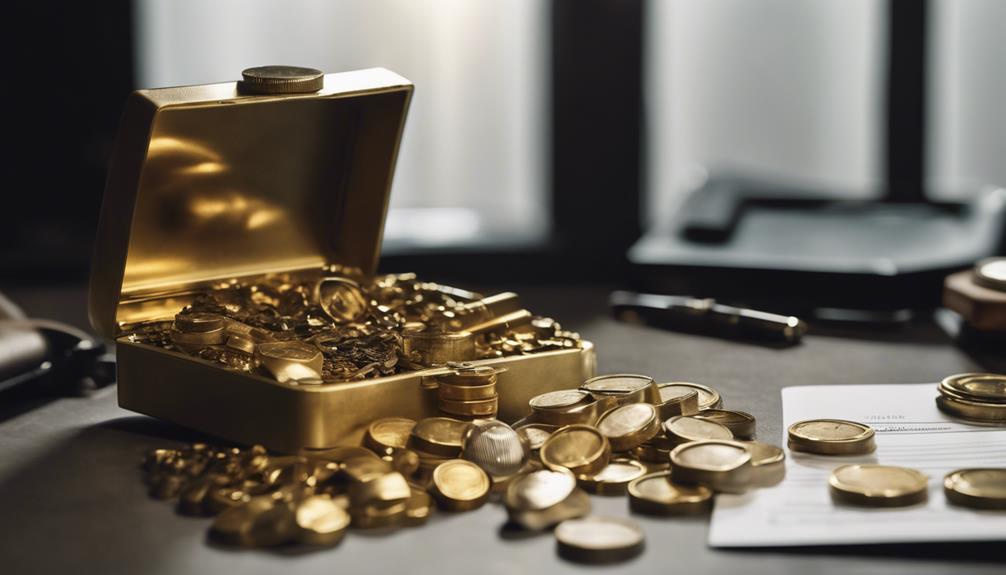
Essentially, owning physical precious metals provides a tangible sense of security and control over your investments. When you have tangible asset ownership of physical precious metals, you possess a valuable commodity that isn't just a piece of paper or a digital representation. This tangible ownership allows you to physically hold your investment, giving you a concrete connection to your financial portfolio. By having direct control over physical precious metals, you can diversify your investment portfolio, reducing reliance on the performance of other entities or financial markets.
In times of economic uncertainty or financial crises, the tangible nature of owning precious metals offers protection. The security provided by tangible assets can help safeguard your wealth when faced with volatile market conditions. By holding physical metals, you're better positioned to weather economic storms and mitigate risks associated with intangible investments. Essentially, tangible asset ownership of physical precious metals not only offers a sense of security but also provides a level of control and stability in your investment strategy.
Risks Associated With Precious Metal Investments
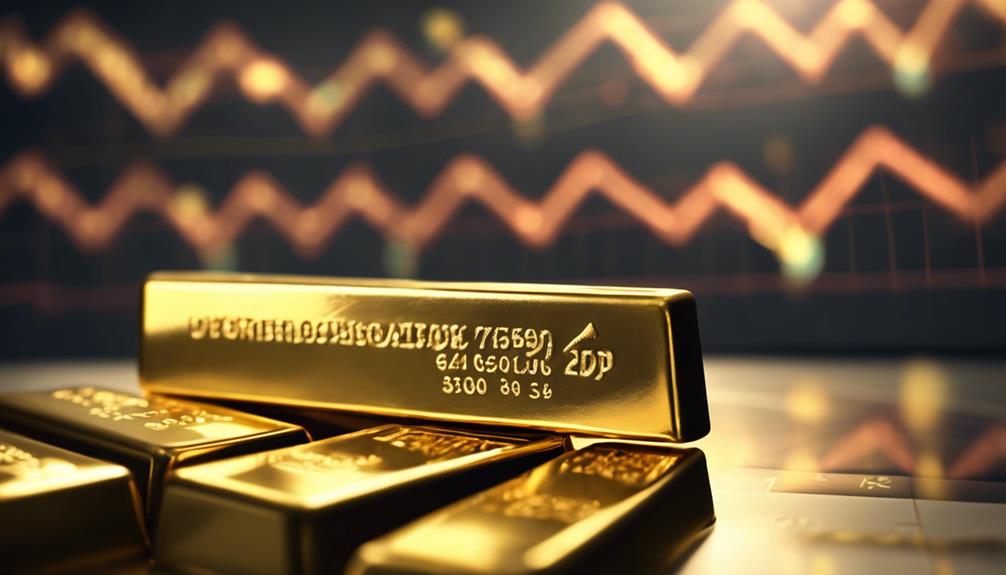
Amidst the dynamic landscape of financial markets, the volatility of precious metal prices poses a significant risk for investors seeking to diversify their portfolios.
Price volatility in precious metal investments is influenced by economic changes, Federal Reserve policy, demand, supply, and inflation. Additionally, company-specific risks such as cost overruns and financial issues can impact the performance of these investments.
Precious metals may underperform during broad market sell-offs and face competition from alternative investments like cryptocurrencies. The factors affecting precious metal prices are complex and unpredictable, necessitating careful monitoring and risk management strategies.
It's essential to recognize the risks of investing in precious metals, including the potential for significant price fluctuations and external market influences. To navigate these risks effectively, investors must consider diversifying their portfolios, staying informed about economic indicators, and implementing risk management techniques to mitigate the inherent volatility in the precious metals market.
Factors Impacting Precious Metal Liquidity
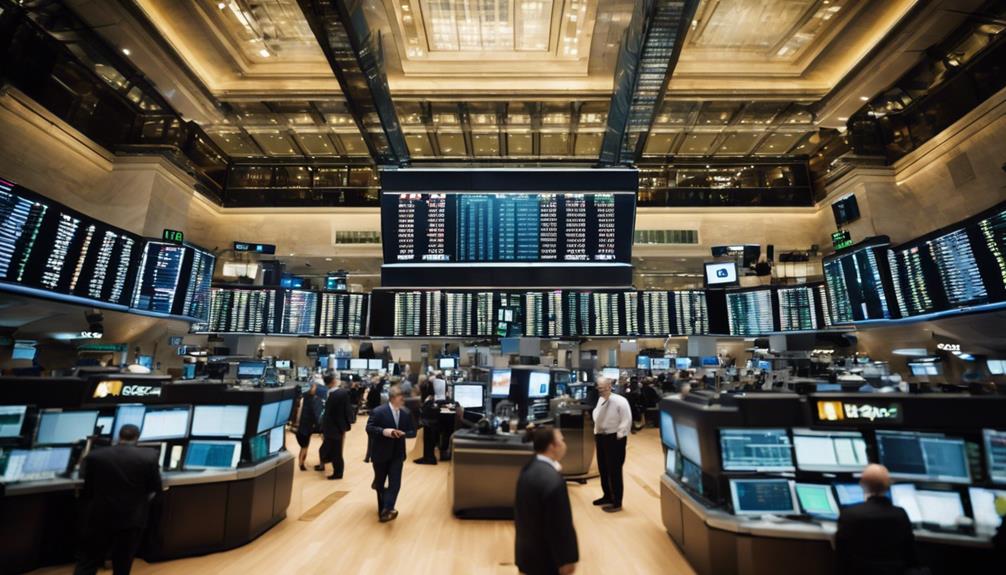
Understanding the landscape of precious metal investments requires an awareness of the factors that influence their liquidity, including market demand, supply levels, and economic conditions. High demand for precious metals, such as gold and silver, can enhance liquidity, making it easier to buy and sell these assets. Economic stability and investor sentiment also play pivotal roles in determining the liquidity of precious metals in the market.
The limited supply of precious metals adds to their inherent liquidity and value, making them attractive investment options. Additionally, factors like geopolitical events, currency movements, and global economic trends can cause fluctuations in precious metal liquidity. It's essential for investors to monitor these variables closely to make informed decisions regarding their precious metal investments.
Frequently Asked Questions
Are Precious Metals Still a Good Investment?
When contemplating investing in precious metals, it's crucial to weigh the potential risks and benefits. Gold's reputation as a hedge against inflation and silver's industrial applications add to their appeal. Diversifying your portfolio with these metals can offer stability during market downturns.
However, it's important to carefully assess the potential risks and benefits before making any investment decisions. Conduct thorough research to ensure your choices are in line with your financial objectives and risk tolerance.
Why Are Investments in Precious Metals Risky?
Investing in precious metals carries risks due to their volatile prices influenced by economic shifts, Federal Reserve actions, and supply-demand dynamics. Company-specific issues, like financial troubles, further add to the risk.
During market downturns, precious metals may underperform, facing competition from emerging investments like cryptocurrencies. The complex and unpredictable nature of factors affecting precious metals prices heightens the overall risk.
It's essential to assess and manage these risks carefully to safeguard investments.
What Is One Disadvantage of Investing in a Precious Metal Such as Platinum?
One disadvantage of investing in a precious metal like platinum is its vulnerability to price fluctuations. Factors like industrial demand can cause platinum's value to vary greatly.
Compared to other metals, platinum is costly, making it less accessible and affordable for some investors. Limited investment options for platinum also reduce its liquidity in the market.
These factors contribute to the risk associated with investing in platinum, especially for those seeking stability in their investments.
What to Know Before Investing in Precious Metals?
Before diving into precious metals, grasp their unique traits. Understand their role as a store of value against economic uncertainties.
Be aware of the costs linked to storage, insurance, and potential theft risks. Realize that these assets don't generate income like stocks.
Stay vigilant about market fluctuations impacting prices. Plan for ease of liquidation when needed.
Educate yourself to make informed decisions in the glittering world of precious metal investments.
Conclusion
To sum up, investing in precious metals can be like exploring a sea of opportunity and risk.
While the appeal of tangible asset ownership and potential financial gains may be enticing, the volatility and liquidity concerns must be carefully considered.
It's important to weigh the pros and cons, assess your risk tolerance, and make informed decisions to safeguard your investments.
Remember, the precious metals market can be a wild ride, so proceed with caution and diligence.
